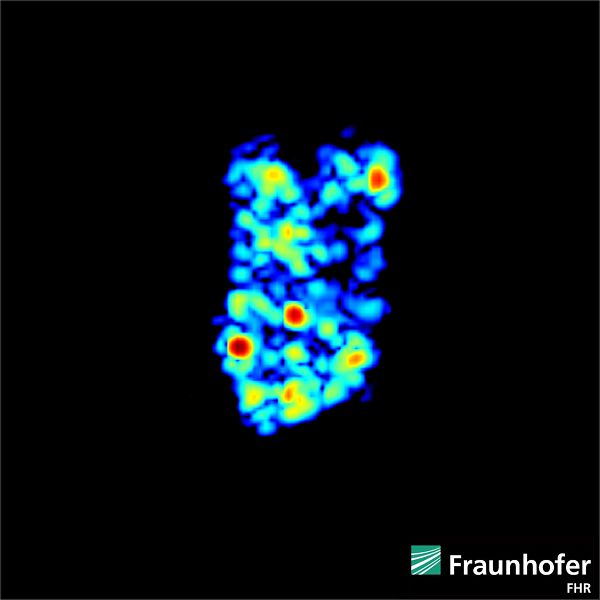Fraunhofer FHR observes ISS battery pack before re-entry


Weighing 2.6 tons, as big as a car, and on course over Germany: The re-entry of the ISS battery pack caused a stir in early March. The space observation radar TIRA observed the object reliably during its final days on behalf of the joint GSSAC, providing meaningful radar data during its flyovers.
Decommissioned and detached: In 2021, the battery pack was jettisoned from the ISS and had been descending in orbit towards its re-entry into Earth's atmosphere, where the piece of space debris was expected to burn up due to the immense friction. In early March 2024, the battery pack came closer to Earth, with Germany also lying within the battery's flyover and potential re-entry area. Although a direct impact of debris on Germany was deemed extremely unlikely, the population was informed through the warning apps NINA and KATWARN.
TIRA always keeps an eye on the near-Earth space environment
The Fraunhofer FHR regularly conducts assignments for the German Space Situational Awareness Center (GSSAC) with its space observation radar TIRA (Tracking and Imaging Radar) as part of the project WRIS (Space Object Identification Sensor). Using the experimental system TIRA, a unique sensor in Europe, researchers from Wachtberg observe and analyze space objects such as satellites or space debris. This was also the case with the ISS battery pack: A few days before the predicted re-entry, the team received the measurement task. From March 4-8, 2024, the scientists conducted measurements of the ISS battery during its flyovers over Germany and Europe to gain the most precise knowledge of the object's flight path. The measured position and orbit data were transmitted to GSSAC in near-real time, which used these and other data to determine the up-to-date re-entry predictions of the object.
All clear for Germany on March 8
On March 8, the final sighting time of the battery pack occurred as it flew over Germany for the last time. An all-clear was then issued for this area. During the measurement on March 8, TIRA provided a highly anticipated, likely final radar image of the battery, which re-entered Earth's atmosphere over Central America later that evening and largely burned up. According to NASA, smaller debris pieces fell into the sea and a house in Florida.